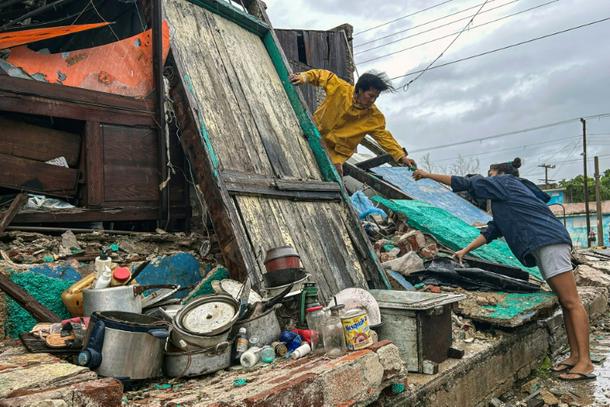
A family salvages belongings from the rubble of their home after it collapsed during Hurricane Melissa’s passage through Santiago de Cuba, Cuba
Santiago de Cuba (Cuba) (AFP) - Hurricane Melissa bore down on the Bahamas Wednesday after cutting a path of destruction through the Caribbean, leaving 30 people dead or missing in Haiti and parts of Jamaica and Cuba in ruins.
Somewhat weakened but still threatening, Melissa will bring damaging winds and flooding rains to the Bahamas Wednesday before moving on to Bermuda late Thursday, according to the US National Hurricane Center (NHC).
“In the Bahamas, residents should remain sheltered,” it said, while in Bermuda, “preparations should be underway and be completed before anticipated first occurrence of tropical-storm-force winds.”
As Melissa left Cuban shores, residents started assessing their losses, with President Miguel Diaz-Canel quantifying the damage as “extensive.”
In the east of the communist island battling its worst economic crisis in decades, people struggled through flooded and collapsed homes and inundated streets.
The storm smashed windows, downed power cables and mobile communications, and ripped off roofs and tree branches.
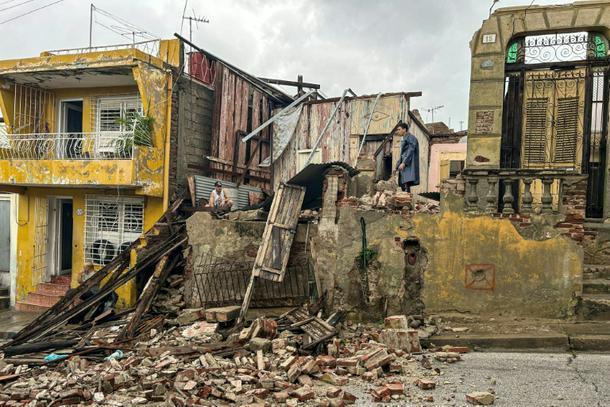
A home damaged as Melissa passed through Santiago de Cuba, Cuba
Cuban authorities said some 735,000 people had been evacuated – mainly in the provinces of Santiago de Cuba, Holguin and Guantanamo.
In Santiago de Cuba, homemaker Mariela Reyes, 55, recounted how violent winds lifted the roof off her humble dwelling and dumped it a block away.
She managed to save her TV set and a few small appliances from her flooded home.
“It’s not easy to lose… the little you have,” Reyes told AFP.
- ‘Disaster area’ -
Pope Leo offered prayers from the Vatican, while the United States said it was in contact with the governments of Jamaica, Haiti, the Dominican Republic and the Bahamas.
“We have rescue and response teams heading to affected areas along with critical lifesaving supplies,” US Secretary of State Marco Rubio said on X, without mentioning ideological foe Cuba.
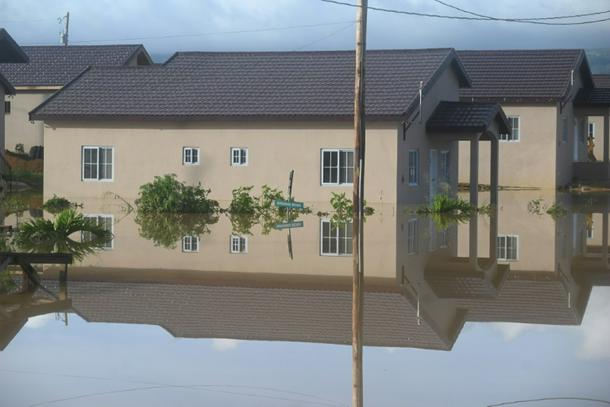
Flooded homes in St. Elizabeth, Jamaica
The UK government announced £2.5 million (about $3.3 million) in emergency funding for the region.
In Jamaica, where some parts are still recovering from Hurricane Beryl last year, UN resident coordinator Dennis Zulu told reporters Melissa had brought “tremendous, unprecedented devastation of infrastructure, of property, roads, network connectivity.”
Prime Minister Andrew Holness declared the tropical island famed for tourism a “disaster area.”
Many homes were destroyed and about 25,000 people sought refuge in shelters.
“Our teams are on the ground working tirelessly to rescue, restore, and bring relief where it’s needed most… To every Jamaican, hold strong. We will rebuild, we will recover,” Holness said on X.
Information Minister Dana Morris Dixon told CNN officials had been unable to confirm reports of deaths “because we have not been able to get to some of the hardest hit areas.”
She added work was ongoing to reopen the airport at Montego Bay so an estimated 25,000 tourists caught in the storm “will soon be able to leave if they need to.”
- ‘Everything is gone’ -
At least 20 people in southern Haiti, including 10 children, were killed in floods caused as the hurricane shaved past earlier in the week, according to civil defense agency head Emmanuel Pierre.
Ten more were missing.
“People have been killed, houses have been swept away by the water,” resident Steeve Louissaint told AFP in the coastal town of Petit-Goave, where the Digue River burst its banks.
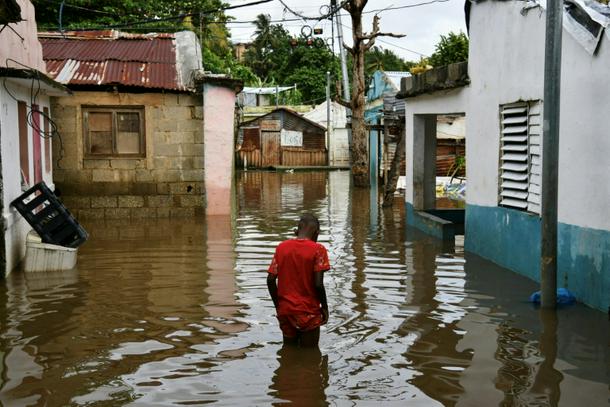
A flooded street in Santo Domingo, Dominican Republic on October 28, 2025
Hurricane Melissa tied the 1935 record for the most intense storm ever to make landfall when it battered Jamaica on Tuesday, according to the US National Oceanic and Atmospheric Administration (NOAA).
In Seaford Town, farmer and businessman Christopher Hacker saw his restaurant and nearby banana plantations flattened.
“Everything is gone,” he told AFP. “It will take a lot to recover from this.”
- ‘A brutal reminder’ -
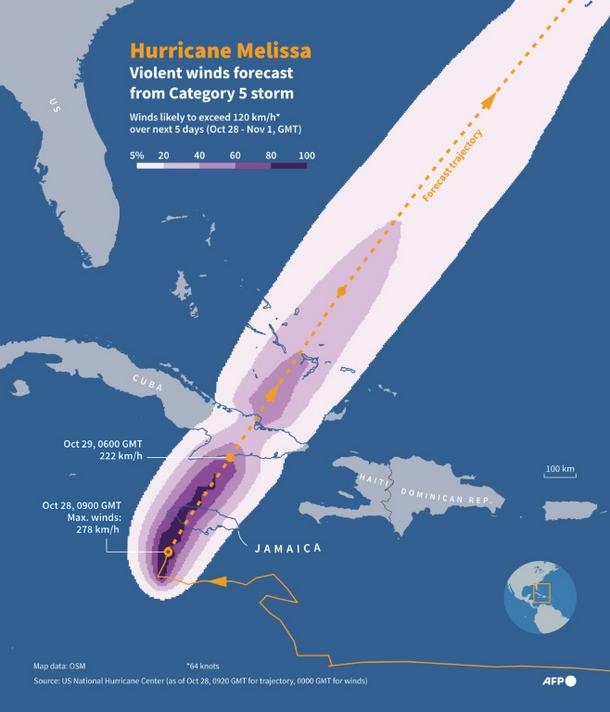
Infographic showing the forecast path of Hurricane Melissa as of October 28 at 0920 GMT, and the probability that winds will exceed 120 km/h around its track in the next 5 days
The full extent of Melissa’s damage is not yet clear. A comprehensive assessment could take days with communications networks disrupted across the region.
UN Climate Change Executive Secretary Simon Stiell said such mega-storms “are a brutal reminder of the urgent need to step up climate action on all fronts, as they bring massive human and economic costs in every part of the world, and those costs grow faster and bigger each year.”
Due to climate change, warmer sea surface temperatures inject more energy into storms, boosting their intensity with stronger winds and more precipitation.
“Human-caused climate change is making all of the worst aspects of Hurricane Melissa even worse,” said climate scientist Daniel Gilford.